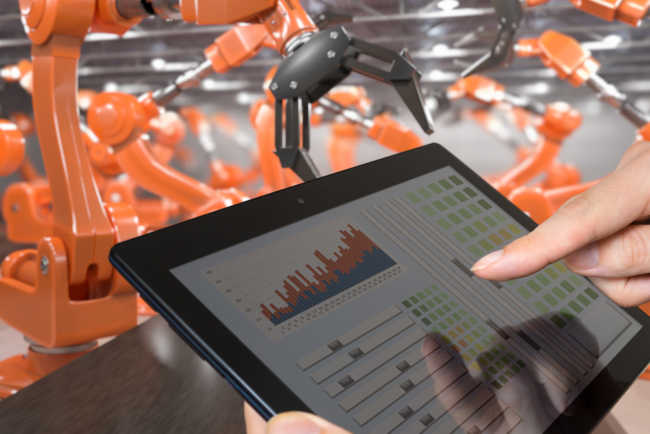How IoT Supported Maintenance Improves Product Quality
The number of possible applications of IIoT grows every day, and this trend isn’t likely to change anytime soon. The latest numbers estimate that the combined IoT markets will reach a staggering $520B by 2021.
An industry that is definitely being affected by the recent developments in IoT technology is maintenance. There are many reasons why more and more production companies are looking to implement predictive maintenance and improving product quality is definitely one of them.
It is not hard to see why. Machines that operate in peak conditions provide maximum production output without compromising on product quality.
Let’s see how exactly does IoT technology support predictive maintenance in achieving this.
Real-time data & remote monitoring
Today, there is a vast array of different condition monitoring techniques that can be used to track asset health in real-time. This means that you can see very clearly when machines are and are not operating at peak condition. By having such a good understanding of your machinery, one can not only guarantee everything is working at the highest level seven days a week but doing so while saving money and producing far better products.
Being able to remotely monitor your equipment in real-time gives you several benefits:
- reduces the number of visual inspections your technicians have to make, giving them more time to focus on repairs at hand
- you get the information about potential machine malfunction earlier, which means you can do preventive maintenance work before the machine breaks down and starts producing defective products
- while not that common in the manufacturing industry, some machines operate in unsafe environments – in these scenarios, being able to remotely monitor your equipment means that your technicians will be exposed to less risk as they will have to have less physical contact with it
Another exciting thing that is possible today using IoT-enabled devices and wireless technology is remote asset repair. At the moment, this mostly comes down to specialized/experienced technicians guiding others at remote locations how to conduct certain repairs. In the future, we could see this growing in a way that maintenance technicians actually control robots or robotic arms and literally conduct remote asset repair.
Predictive analytics
Having real-time data doesn’t mean much if you can’t actually use it to make informed decisions.
So, if you actually want to be able to predict potential machine failures, you have to run all of that data through predictive algorithms. Through the use of prognostic analytics, given the enormous amount of data IoT devices is able to capture it is possible to analyze anything imaginable and apply the findings towards a particular goal, which would, in this case, be predicting asset breakdowns and improving overall equipment effectiveness.
With the spread of IoT technology, machine to machine communication and machine to software communication has become a common occurrence. These days, you can create an automated system where a CMMS automatically generates a work order based on the information from the sensors you retrofitted on the production line. So, for example, CMMS can create a fill oil task when the level of oil in a reservoir gets too low or create a prognostic maintenance task when a sensor notices increased vibrations on a gearbox.
Combining real-time data from remote sensors and predictive analytics forms the basis of predictive maintenance.
But IoT predictive maintenance is not the Everest of the maintenance industry. With the increased use of IoT devices and further developments in machine learning and AI, we will see more and more businesses turning to prescriptive maintenance. Prescriptive maintenance represents a form of maintenance where predictive analytics recognize different failure patterns and actually give you a recommended set of actions you should take to prevent predicted failures.
Are you ready?
To fully utilize the power of real-time data and predictive analytics, your facility needs to be able to accommodate several requirements – condition monitoring sensors, developed predictive models, wireless network, and maintenance software that can communicate with installed sensors being the most important ones.
While predictive maintenance implementation can have high upfront costs, it is especially interesting to production facilities as it is proven to increase asset uptime by around 10%, as well as reduce the number of unexpected equipment breakdowns.
This means the production can run for longer, with fewer interruptions and fewer defects that are the direct consequence of equipment issues. It is a deal that more and more production facilities are ready to take.
![]() Bryan Christiansen is the founder and CEO at Limble CMMS. Limble is a modern, easy to use mobile CMMS software that takes the stress and chaos out of maintenance by helping managers organize, automate, and streamline their maintenance operations.
Bryan Christiansen is the founder and CEO at Limble CMMS. Limble is a modern, easy to use mobile CMMS software that takes the stress and chaos out of maintenance by helping managers organize, automate, and streamline their maintenance operations.



